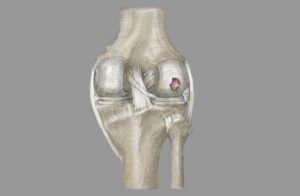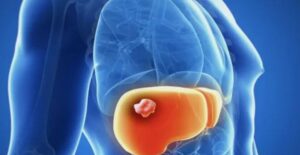Efficient patient flow is vital for the success of any healthcare facility, particularly in urgent care centers where prompt medical attention is crucial. Improving patient flow not only enhances patient satisfaction but also optimizes staff productivity and ensures timely delivery of care. In this article, we will explore key strategies that urgent care facilities can implement to enhance patient flow and streamline operations.
Ways To Increase Patient Flow
By implementing these important strategies, urgent care facilities can optimize patient flow, reduce wait times, and improve overall patient satisfaction. Ultimately, this not only benefits patients but also enables healthcare providers to deliver timely and high-quality care, fulfilling the mission of urgent care facilities to provide accessible and efficient healthcare services to the community.
Effective Triage System
A well-designed triage system is essential for efficient patient flow. Implementing an effective triage process ensures that patients are categorized based on the severity of their condition. Here are some key considerations for optimizing the triage system:
- Trained staff: Employing experienced nurses or physicians for triage can help accurately assess patient conditions and assign appropriate priorities.
- Clear guidelines: Develop clear protocols and guidelines to guide triage decisions, ensuring consistency and efficiency.
- Ongoing training: Regularly train staff to keep their triage skills up-to-date and enable them to handle high-pressure situations.
Streamlined Registration Process
A cumbersome registration process can significantly contribute to patient flow bottlenecks. Simplifying and streamlining the registration process can enhance patient satisfaction and minimize delays. Consider the following strategies:
- Digital registration: Implement an electronic registration system that allows patients to complete necessary paperwork online before their visit, reducing wait times and administrative burdens.
- Dedicated registration staff: Assign dedicated staff members to handle the registration process efficiently, ensuring patients are swiftly checked in and their information is accurately recorded.
- Electronic health record integration: Integrate the registration system with the facility’s electronic health record system to streamline data entry and retrieval, eliminating duplication and reducing errors.
Efficient Staff Allocation
Proper staff allocation is crucial for maintaining smooth patient flow. Adequate staffing levels, combined with strategic assignment of personnel, can prevent congestion and ensure timely patient care. Consider the following strategies:
- Staffing analysis: Conduct regular assessments of patient volume and acuity to determine appropriate staffing levels during different shifts and times of the day.
- Cross-training: Encourage cross-training of staff members to increase flexibility and enable them to perform multiple roles, which can be particularly useful during peak hours or unexpected staff shortages.
- Dynamic scheduling: Utilize flexible scheduling techniques that allow for real-time adjustments based on patient demand, ensuring sufficient coverage during busy periods.
Optimized Workflow and Resource Utilization
Efficient workflow management and resource utilization can significantly impact patient flow in urgent care facilities. By optimizing these aspects, facilities can minimize wait times, enhance patient throughput, and improve overall efficiency. Consider the following strategies:
- Process mapping: Analyze the patient journey and identify bottlenecks or areas for improvement. Use process mapping techniques to visualize workflows and identify opportunities for streamlining.
- Room utilization: Optimize room allocation to maximize efficiency. Ensure that each room is appropriately equipped and staffed, reducing wait times and improving patient turnover.
- Communication and collaboration: Foster effective communication and collaboration among staff members to minimize delays and ensure seamless transitions between various stages of patient care.
Embracing Technological Solutions
Leveraging technology can greatly enhance patient flow in urgent care facilities. By automating certain tasks and utilizing digital solutions, facilities can improve efficiency and patient experience. Consider the following technological strategies:
- Telemedicine: Implement telemedicine capabilities to provide virtual consultations, reducing the need for in-person visits and optimizing the utilization of healthcare providers.
- Electronic queuing systems: Utilize electronic queuing systems to manage patient flow, providing real-time updates on wait times and reducing patient anxiety.
- Mobile applications: Develop a user-friendly mobile application that allows patients to schedule appointments, receive notifications, and access their medical medical records, enhancing convenience and engagement.
Also Read:
- Must Know Trends For Medical Billers and Coders
- Elevate Your Practice With EHR Optimization
- How to Improve Patient Experience Through RCM
Implement Appointment-Based System
Introducing an appointment-based system can help manage patient flow more effectively. By offering scheduled appointments, urgent care facilities can reduce overcrowding and minimize wait times. Patients can book appointments in advance, ensuring a smoother flow of patients throughout the day and allowing for better allocation of staff and resources.
Enhance Communication with Patients
Effective communication with patients is essential for improving patient flow. Clear and timely communication regarding wait times, updates on delays, and any changes in the schedule can reduce patient anxiety and dissatisfaction. Utilize digital signage, public address systems, or text message alerts to keep patients informed and manage their expectations.
Utilize Point-of-Care Testing
Incorporating point-of-care testing can expedite the diagnostic process and reduce wait times. By having essential diagnostic tests, such as rapid strep tests or influenza tests, readily available within the urgent care facility, healthcare providers can quickly diagnose and treat patients, avoiding unnecessary delays caused by sending samples to external laboratories.
Collaborate with External Service Providers
Collaborating with external service providers, such as radiology or laboratory facilities, can expedite the delivery of test results. Establishing efficient communication channels and partnerships with these providers can ensure a streamlined process for ordering tests, receiving results, and making timely treatment decisions.
Establish Clear Discharge Processes
Efficient discharge processes are vital for maintaining patient flow and ensuring a smooth transition from urgent care to follow-up care or home. Develop clear discharge protocols and provide patients with comprehensive instructions and any necessary prescriptions or referrals. Clear communication regarding follow-up appointments or recommended next steps is crucial for optimizing patient flow.
Continuous Quality Improvement
Regularly evaluate and improve patient flow processes through continuous quality improvement initiatives.
Conclusion:
Improving patient flow in an urgent care facility is vital for delivering timely and effective care while optimizing resources and staff productivity. By implementing the strategies outlined above, urgent care facilities can enhance patient flow, improve patient satisfaction, and streamline operations.









